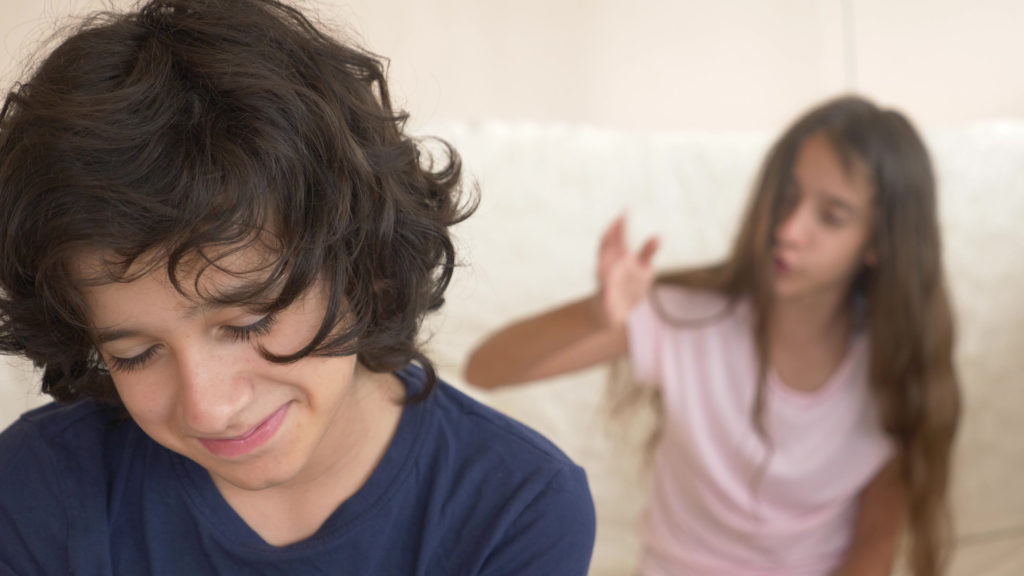In 2016, Chris Hollis and colleagues compiled a Practitioner Review for the Journal of Child Psychology and Psychiatry evaluating the most effective and well-supported interventions for children and young people affected by Tourette syndrome and chronic tic disorder. Here, they discuss the key findings from their systematic review, and highlight that children and young people affected by tics require improved access to evidence-based behavioural interventions.
Tourette syndrome (TS) and chronic tic disorder (CTD) are characterised by the presence of combined or singular motor and phonic tics. These tics generally begin in childhood around the age of 6-7 years, peak in severity between ages 8 and 12 years, and wane during early adulthood. Although TS was first described in 1885, systematic evidence-based clinical guidance for the treatment of tics in affected children and young people is still lacking. “TS and CTD affects 1-2% of children and young people and cause significant psychosocial impairment”, explains Hollis. “For practitioners, however, there remains uncertainty regarding the relative benefits and risks of medication and behavioural interventions for affected patients”.

To address this issue, Hollis et al., conducted a comprehensive systematic review covering pharmacological, behavioural and other physical and alternative interventions (e.g. botulinum toxin, deep brain stimulation) for tics in children and young people. They searched 21 databases from their inception to October 2014 to identify placebo-controlled trials of pharmacological, behavioural, physical and alternative interventions for tics in children and young people with TS or CTD. Their search resulted in 41 trials performed in children (or mixed studies) that met their eligibility criteria. These trials included 32 pharmacological, five behavioural, two physical and one dietary intervention. The GRADE approach1 was used to assess the level of certainty in the effect estimates (quality of evidence) for each outcome.
The researchers broke down the data by intervention type and level of certainty (namely moderate, low or very low certainty) in the estimates of the effect. For pharmacological interventions, a adrenergic receptor agonists — namely clonidine and guanfacine — showed a medium-sized benefit on tics when data were pooled. Despite their widespread use for treating tics, antipsychotic drugs (including aripiprazole, haloperidol, pimozide, risperidone and ziprasidone) showed low-to-very-low certainty.
“Overall, we found that a adrenergic receptor agonists were equally effective as antipsychotics but had a more favourable adverse effect profile”, explains Hollis. “However, among practitioners, a adrenergic receptor agonists are typically viewed as less effective in treating tics than antipsychotic; this view is challenged by our results”. Consequently, the researchers recommend that a adrenergic receptor agonists should be considered as the first-line pharmacological treatment for moderate to severe tics in children and young people, and that antipsychotics should be reserved for when noradrenergic agents are ineffective or poorly tolerated.
For the behavioural interventions, Hollis and colleagues found that after pooling the results of two trials, habit reversal therapy (HRT) and comprehensive behavioural intervention for tics (CBIT) had a medium-sized effect in improving tics compared to waitlist/supportive psychotherapy. The data pertaining to all other behavioural interventions (including anger control training, parent training and relaxation training) were inconclusive. “HRT/CBIT for tics demonstrated similar effectiveness to medication, but a more favourable adverse effect profile”, describes Hollis. “Thus, our data suggest that behavioural intervention should be offered as a first-line intervention for young people with mild to moderate tics, either alone or in combination with pharmacological treatment”.
The study did raise questions as to the relative value of behavioural interventions when delivered alone or in combination with pharmacological interventions. “There is currently no evidence regarding the relative benefits of HRT/CBIT alone compared to benefits of combining medication and behavioural intervention”, says Hollis. “Randomised controlled trials assessing the relative benefits of HRT/CBIT alone compared to combining medication and HRT/CBIT are needed.”
Finally, the researchers found no evidence for benefit of physical, dietary or alternative interventions on tics — including deep brain stimulation, repetitive transcranial magnetic stimulation, botulinum toxin, IV immunoglobulins, omega 3 fatty acids and acupuncture. More research is required to determine whether any of these approaches are sufficiently safe to be considered as treatments for tics in children and young people with TS.
The researchers identified numerous areas in need of further research in order to advance the field. Overall, the cost-effectiveness of different treatment interventions for tics now needs to be assessed. Furthermore, the moderating effects of age, tic severity, premonitory urges and common co-morbidities (such as attention deficit hyperactivity disorder, obsessive-compulsive disorder, anxiety and depression) on the treatment of tics needs to be addressed, as well as the moderating effects of tics on treatment outcomes for common co-morbidities.
Most importantly, the researchers noted the difficulties surrounding access and financial constraints that may hinder delivery of behavioural treatments. Strikingly, they reported that <20% children and young people are offered and access evidence-based behavioural interventions. The review highlighted that remote online digital delivery could play an important role in increasing access to behavioural interventions for tics. “A key question is whether behavioural interventions are as effective when delivered remotely compared to face-to-face”, proposes Hollis. “Future research should focus on the development and evaluation of digital technologies that can increase access to behavioural interventions”.
To begin addressing this question, Hollis and colleagues are conducting the ORBIT (Online Remote Behavioural Intervention for Tics) interventional clinical trial (NCT03483493) funded by the National Institute of Health Research (NIHR) Health Technology Assessment programme and sponsored by the Nottingham Healthcare NHS Trust.2 The primary objective of this 4-year trial is to evaluate the clinical effectiveness of ORBIT — a therapist-guided, parent-assisted, internet-based behavioural therapy intervention for tics in young people — compared with usual care plus online education. They hope to find out whether young people and their families find online therapist-supported treatment acceptable and determine how the treatment may be best delivered by the NHS. This clinical trial is currently underway and will run until September 2021.
In summary, Hollis et al. uncovered two key areas in this field that now require urgent attention. First, they found that understanding the clinical value of most interventions for tics were limited by the paucity of available evidence, the small number of trials performed and the small sample sizes for any given intervention. Many interventions had no, or very low quality evidence, rendering it difficult to draw firm conclusions regarding efficacy. Second, they noted that too few affected children and young people are able to access an evidence-based behavioural intervention for tics. Consequently, efforts must now be made to develop and evaluate digital technologies that could significantly increase access to evidence-based behavioural interventions.
In the future, they hope that a personalised medicine approach, with better prediction as to who responds best to which therapy, will be developed and that more trials of combinations of interventions will be conducted. Finally, they hope that NICE Clinical Guidance for TS and tic disorders will be available.
Referring to: Whittington, C., Pennant, M., Kendall, T., Glazebrook, C., Trayner, P., Groom, M., Hedderly, T., Heyman, I., Jackson, G., Jackson, S., Murphy, T., Rickards, H., Robertson, M., Stern, J. and Hollis, C. (2016), Practitioner Review: Treatments for Tourette syndrome in children and young people — a systematic review. J Child Psychol Psychiatr. 57: 988-1004. doi: 10.1111/jcpp.12556
Further reading:
1Guyatt, G.H. et al. (2011), GRADE guidelines: A new series of articles in the Journal of Clinical Epidemiology. J. Clin. Epidemiol. 64: 380-382. doi: 10.1016/j.jclinepi.2010.09.011
2https://clinicaltrials.gov/ct2/show/NCT03483493
Glossary:
Habit reversal therapy (HRT): a behavioural treatment used to reduce repetitive behaviours that serve no adaptive purpose. Habit reversal focuses on bringing repetitive behaviours into conscious awareness and replacing them with less bothersome behaviours.
Comprehensive behavioural intervention for tics (CBIT): a behavioural therapy that teaches an affected individual to become aware of their behaviour and help them change this behaviour in a careful and systematic way. This comprehensive approach uses psychoeducation and self-awareness to understand the premonitory urge behind tics and know when a tic occurs. Habit reversal techniques are used to block the tic, or train a competing alternative response, when the urge is recognized and relaxation techniques are taught to reduce stress levels when tics occur.
Learning Outcomes:
- Tourette syndrome and chronic tic disorder affect 1-2% of children and young people and cause notable psychosocial impairment. However, there is a lack of evidence-based clinical guidance for practitioners.
- Behavioural intervention for tics (HRT/CBIT) demonstrates similar effectiveness to medication, and a more favourable adverse effect profile, which suggests that it should be offered as a first-line intervention for young people with tics.
- When medication is considered appropriate, the balance of clinical benefits to harm may favour alpha 2 agonists (i.e. clonidine and guanfacine).
- Access to evidence-based behavioural interventions is often limited: only ~20% of young people who would benefit from this intervention can currently access it. New forms of delivery, such as digital online interventions are needed.
Policy Impact:
- There is currently no NICE Clinical Guidance for Tourette syndrome and tic disorders. Therefore, there is no formal mechanism (supported by NICE) to disseminate and implement treatment recommendations in practice.
- Children and young people should have better access to digital/online therapy. However, this would require the development of a national digital IAPT (Improving Access to Psychological Therapies) programme for children and young people – equivalent to what exists for adults.
